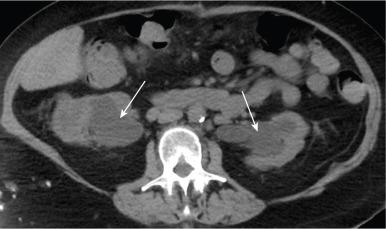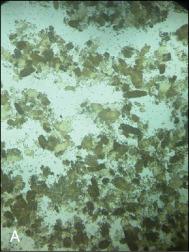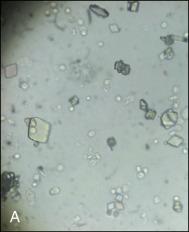Physical Address
304 North Cardinal St.
Dorchester Center, MA 02124
Lymphoma is a hematologic malignancy caused by the abnormal proliferation of lymphoid cells. An estimated 80,000 people will be diagnosed with lymphoma in the United States in 2018. Because of more targeted therapies, patients with lymphoma are living longer. Lymphoma can broadly be divided into Hodgkin and non-Hodgkin lymphoma, based on cellular characteristics. Lymphoma can involve organs other than the lymph nodes, including the kidney and kidney-associated lymph tissue. Patients can develop kidney injury as a result of the lymphoma itself either through primary or secondary interactions with the kidney, a consequence of the comorbid illness or conditions brought on by either treatment of lymphoma or the malignancy itself. In addition, medications used to treat the lymphoma or associated side effects from treatment may also cause kidney injury. As with leukemia, kidney manifestations encompass a broad spectrum of disease: prerenal acute kidney injury (AKI), acute tubular necrosis (ATN), renovascular disease, parenchymal infiltration, urinary obstruction, glomerulopathies, and electrolyte and acid-base abnormalities. Recognizing and addressing kidney injury in patients with lymphoma is crucial to halt progressive injury and avoid a delay in chemotherapy. This chapter will focus on kidney injury in patients with lymphoma as it pertains to the malignancy and complications from treatment. Chapters 16, 17, and 18 address kidney injury associated with therapeutic agents used to treat lymphoma and other malignancies. Because many of the concepts are similar to those presented in the prior chapter on kidney injury and leukemia, this chapter will provide an overview on shared mechanisms, while focusing more on lymphoma-specific causes of kidney injury.
AKI in patients with hematologic malignancies is common with upwards of 43% of patients in the intensive care unit with leukemia or lymphoma having some form of AKI. The presence of AKI in patients with lymphoma has therapeutic and prognostic implications, with 29% of those patients requiring renal replacement therapy and a mortality rate of upwards of 72%, the latter being higher than those patients with hematologic malignancies that do not develop AKI. As with leukemia, the presence of lymphoma portends a much higher rate of AKI than patients with other diseases, including cirrhosis or cardiovascular disease. The diagnostic approach to a patient presenting with AKI in the setting of lymphoma involves elucidation of prerenal, intrarenal, and postrenal etiologies ( Table 38.1 ).
| Prerenal |
|
| Intrarenal |
|
| Postrenal |
|
Prerenal AKI is the most common kidney injury in patients with lymphoma. Prerenal AKI is most often caused by volume depletion from poor oral fluid intake (78%), anorexia (64%), early satiety (50%), emesis (23%), or diarrhea (16%). In addition, the use of certain medications in the setting of volume depletion may exacerbate or magnify the severity of prerenal AKI in a patient with lymphoma. Medications that affect kidney afferent and efferent tone, including renin-angiotensin blockade or nonsteroidal antiinflammatory medications, or diuretics may worsen the kidney injury. Prerenal AKI is often suspected based on clinical context and history, and supported with physical examination demonstrating orthostatic hypotension or tachycardia, and laboratory data demonstrating an elevated blood urea nitrogen (BUN) and creatinine, often with a BUN to creatinine ratio greater than 20. Urine studies usually show and elevated specific gravity, a low urine sodium (often less than 20 mEq/L), low fractional excretion of sodium (< 1%), and bland urine sediment with occasional hyaline casts or renal tubular epithelial cells. Treatment of prerenal AKI is supportive, with intravenous crystalloid expansion and removal of exacerbating factors that lead to injury.
In patients with lymphoma, obstruction may result from direct compression or encasement of ureteral outflow by tumor or lymph nodes, retroperitoneal fibrosis, or nephrolithiasis from tumor lysis syndrome. , The retroperitoneum has many lymph nodes that can become affected by systemic disease. Anuric kidney failure should raise the concern for bilateral urinary tract obstruction, which is possible with lymphoma and extensive disease burden. Kidney ultrasound or CT scan should demonstrate varying degrees of hydronephrosis depending on the extent of obstruction ( Fig. 38.1 ). Treatment should happen quickly with immediate decompression with nephrostomy tubes to prevent permanent tubular atrophy and interstitial fibrosis.

Intrarenal causes of kidney injury in hematologic malignancy can be grouped into ischemic and non-ischemic ATN, tubulointerstitial disorders, renovascular disorders, and glomerulopathies. Hemodynamically mediated injury from severe volume depletion, heart failure, or sepsis, and drug-induced injury are common with hematologic malignancy. However, kidney injury directly caused by hematologic malignancy is possible and should be distinguished from other forms of tubular injury, as prognosis is dependent on treatment of the underlying disease.
Diagnosis of intrarenal AKI often relies on diagnostic imaging, urinary sediment analysis, or kidney biopsy. Diagnostic imaging with either renal ultrasound or computed tomography (CT) imaging may demonstrate diffuse bilateral kidney enlargement, suggesting kidney infiltration. Urine sediment analysis can reveal cells or casts that can help distinguish between tubulointerstitial disease or glomerular disease. Biopsy remains the gold standard in diagnosis, and can help identify glomerular, tubulointerstitial, or vascular disorders. Because kidney biopsy does have some risk, it may not possible in a patient with complicated hematologic malignancy, and coagulopathy.
ATN is the most common cause of intrinsic AKI in lymphoma, with more than 75% of patients with AKI having ATN. ATN can often be diagnosed through clinical history and urinary sediment, which will show renal tubular epithelial cells or granular casts, but at times a biopsy may be necessary to exclude other causes of intrinsic AKI ( Fig. 38.2 A and B ). Although the majority of patients with ATN will have ischemia-induced tubular injury, other causes of AKI exist, including drug-related nephrotoxicity and tumor lysis syndrome.

Tumor lysis syndrome occurs when intracellular potassium, phosphate, and nucleic acids are released into the serum from cancer cells. This can be spontaneous release from the death of rapidly growing cancer cells or the direct effect of chemotherapy. Purine nucleic acids that are released are converted to xanthine and then to uric acid by xanthine oxidase. At high levels uric acid crystals can precipitate within the renal tubules and directly injure renal tubule epithelial cells from an associated inflammatory response. This can be detected on the urine sediment by the presence of uric acid crystals that polarize brightly under a polarization filter ( Fig. 38.3 A and B ). In addition, uric acid can also function as a vasoconstrictor, leading to ischemic renal tubular damage through the recruitment of proinflammatory cytokines to the renal interstitium. The risk of tumor lysis syndrome can be mitigated with adequate hydration with nonbicarbonate-containing fluids or xanthine oxidase inhibitors, such as allopurinol or febuxostat, in at risk patients. However, if uric acid levels increase substantially (upwards of 10 mg/dL), rasburicase, a recombinant urate oxidase, can be used to convert uric acid to allantoin, a nonnephrotoxic metabolite that is highly soluble in the urine.

Become a Clinical Tree membership for Full access and enjoy Unlimited articles
If you are a member. Log in here